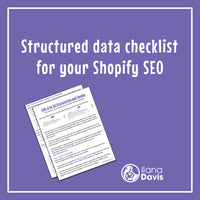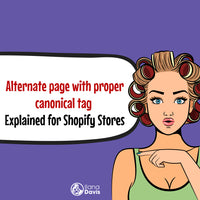Test your Shopify store before big traffic days
Anytime you expect there to be more traffic to your website than normal, there are a few things I recommend you do.
1. Browse your site to test links
I recommend testing your links in a private browser to break any cookies or caching on the site. We don't want Shopify to recognize any of your habits. Shopify caches pages for quite a while. In some cases, it's taken me around 15-20 minutes to break a cache so that's why testing incognito is important.
If you're running ads, start on the ad landing page. If not, start from your homepage. Then click around.
Check to make sure there are no broken or incorrect links.
Make sure you visit your website from both mobile and desktop devices.
Don't forget your navigation in the header and footer. Check every navigation menu including your policies, contact, and about pages.
Try adding products to your cart to make sure it works as expected. Then remove them from your cart to make sure that works as expected.
If you have a shipping or gift with purchase minimum, make sure you test those as well.
Complete the contact form or if you have a link to contact your support, do that as well.
The goal here is to ensure there is no friction for your customers and no dead ends when they are first learning about you.
2. Test your checkout
Still in an incognito private window, test your checkout process.
While in the checkout process, look to make sure your shipping configurations are showing up as expected. Then check to make sure the confirmation email works too.
Don't forget about the visual aspects of your Shopify Checkout. Make sure your logo, fonts, colors, and required fields are up to snuff. Your branding should continue all the way through checkout.
If you've got a post-purchase event, make sure that fires as well.
When testing the checkout, purposely make mistakes. For example, leave a required field blank to make sure there is an error that pops up saying that's a required field.
Testing the checkout all the way through can get a bit tricky if your site is already live. Shopify does have a way to submit test orders without being charged using their Bogus Gateway. I caution against using the Bogus Gateway for live stores because it turns off your checkout sitewide. So I don't recommend this to everyone. If you do a test with the Bogus Gateway, make sure you turn the Bogus Gateway off when you're done.
The easiest way to test your checkout is to add products to your cart and then checkout. As the store owner, you can submit your payment as if you were a customer with a real credit card.
Once you've confirmed the checkout flow works as expected, process a refund and cancel the order.
3. Backup your store
I've written many times about backing up your store. This is especially important because Shopify does not back up your site for you.
If something happens like accidentally deleting a product or an app you're using breaks something, Shopify won't be able to help.
This article breaks down backing up your theme, products, and everything else. It's a safety net in the off chance something happens.
Trust me, the one time it does happen, you'll thank me.
4. Publishing a new theme? Make sure your apps are enabled
Many stores work on an unpublished version of their theme heading into a big sale. This is so helpful because you can build out your sales copy in the theme customizer, without affecting your live site.
When you publish your new theme, you have to make sure your apps are enabled as they don't always automatically enable themselves.
JSON-LD for SEO customers just need to pop into the theme settings area of your theme customizer and make sure the app is enabled. Ensuring JSON-LD for SEO remains enabled keeps your Rich Results in tact and Merchant Center will continue seeing the data it needs for your ads.
JSON-LD for SEO
Get more organic search traffic from Google without having to fight for better rankings by utilizing search enhancements called Rich Results.
Linking Llama
Link discontinued products to their best substitute. Keep discontinued products published on your website and continue to benefit from traffic to these pages.




